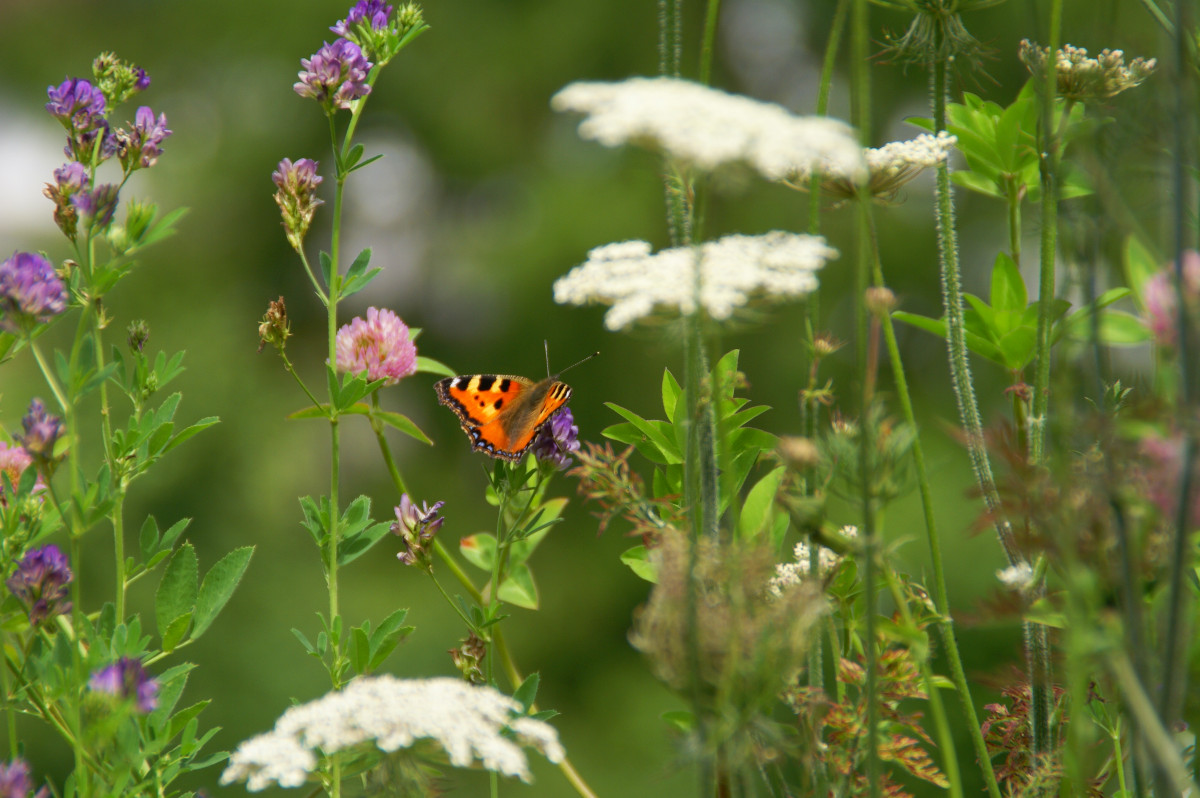Natural green space maintenance in public spaces as well as natural gardening in private spaces means that nature is given space in otherwise very well-maintained areas. This can range from smaller wild corners to entire gardens and even entire parks. It is also important to avoid using pesticides and mineral fertilizers. Wild areas create new habitats or at least so-called stepping stone biotopes. Such areas are essential for animals to network with other individuals from other habitats. A population can only be maintained permanently through constant (genetic) exchange. If attractive habitats are to be created or developed for local animals, particular importance must be attached to native plants as wild growth or as planting.
The importance of native plants
Native plants and animals often share a coevolution that lasts up to millions of years. This means that their lives and survival are characterized by interrelationships and constant mutual adjustments. For example, wild bees and flowering plants have developed in strict dependence on each other. And this has been going on for 120 million years! The bees are dependent on the food that the plants provide; conversely, the plant is partly dependent on pollination by the bee. Both species find it difficult to survive without the other. Individual elements of such a long success story cannot be exchanged “just like that”.
Many wild bees are oligolectic, which means that they are food specialists and rely on a specific plant family, genus or species. If these plants are missing in an area, the wild bee cannot survive there. If the bees have special requirements for their nesting place, e.g. B. natural sandy soil or dead wood structures, the corresponding species quickly end up on the red list.


Non-native garden plants can endanger animals and plants
The use of some non-native ornamental plants can be particularly problematic if they behave invasively, i.e. are able to displace native plants in their natural environment. A well-known example of this is the glandular balsam (Impatiens glandulifera). This plant was originally introduced as an ornamental plant and can be found in moist to wet locations. It grows very quickly and produces an incredibly large number of seeds (up to 4,300 per plant), making it far superior to native plants. As a result, the jewelweed forms large, pure populations in ecologically sensitive biotopes, such as. B. along the banks of rivers or in floodplain areas. Native plants are displaced and the biodiversity in the corresponding areas is decimated. Species of insects that depend on certain plants, such as: B. oligolectic wild bees lose their source of food, so that they also ultimately disappear.
Natural green spaces and natural gardens as a climate protection measure
Natural green spaces and gardens can also make a contribution that should not be underestimated when it comes to climate protection. Especially if natural green space/garden maintenance is preferred to modern gravel gardens. As already explained in connection with meadows, Extensively maintained meadows can have a positive influence on the local climate and water supply and thereby act as a natural air conditioning system. In contrast to gravel gardens, green areas do not heat up as much during the day. The more vegetation there is, the more water is transported from the ground to the atmosphere. This creates a cooling effect so that the surfaces cool down significantly faster than gravel or sealed surfaces. Natural green spaces and gardens can therefore make a significant contribution to a more pleasant local climate, especially in residential areas.
Since advancing climate change can also pose greater challenges for adapted native plants, natural green spaces and gardens in which native plants have a habitat can not only counteract climate change, but also contribute to the preservation of native plants and wildlife.< /p>
Measures
Natural green spaces and gardens are an overall picture of many small measures:
Further reading and links
- wildbienengarten.de
- royalsocietypublishing.org/doi/10.1098
- www.pflanzenforschung.de
- For kids: naturdetektive.bfn.de
